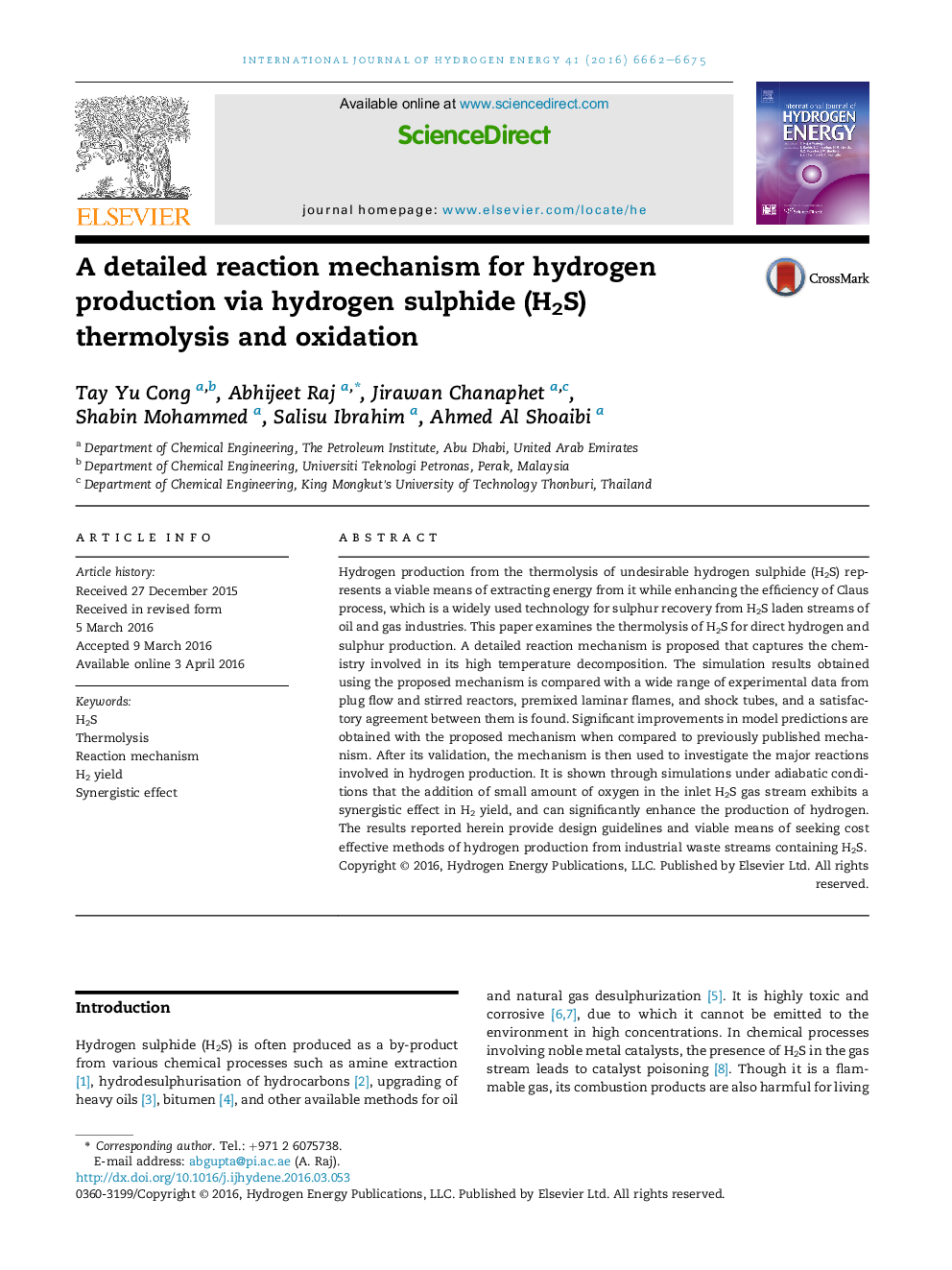| Article ID | Journal | Published Year | Pages | File Type |
|---|---|---|---|---|
| 1270672 | International Journal of Hydrogen Energy | 2016 | 14 Pages |
•A reaction mechanism for H2S thermolysis is developed.•Experimental data from a wide variety of reactors and flames are used for mechanism validation.•A synergistic effect in H2 yield during H2S thermolysis is observed when O2 is added to H2S feed.•Reaction path analysis is presented to determine the reactions responsible for H2 and S2 formation from H2S.
Hydrogen production from the thermolysis of undesirable hydrogen sulphide (H2S) represents a viable means of extracting energy from it while enhancing the efficiency of Claus process, which is a widely used technology for sulphur recovery from H2S laden streams of oil and gas industries. This paper examines the thermolysis of H2S for direct hydrogen and sulphur production. A detailed reaction mechanism is proposed that captures the chemistry involved in its high temperature decomposition. The simulation results obtained using the proposed mechanism is compared with a wide range of experimental data from plug flow and stirred reactors, premixed laminar flames, and shock tubes, and a satisfactory agreement between them is found. Significant improvements in model predictions are obtained with the proposed mechanism when compared to previously published mechanism. After its validation, the mechanism is then used to investigate the major reactions involved in hydrogen production. It is shown through simulations under adiabatic conditions that the addition of small amount of oxygen in the inlet H2S gas stream exhibits a synergistic effect in H2 yield, and can significantly enhance the production of hydrogen. The results reported herein provide design guidelines and viable means of seeking cost effective methods of hydrogen production from industrial waste streams containing H2S.
